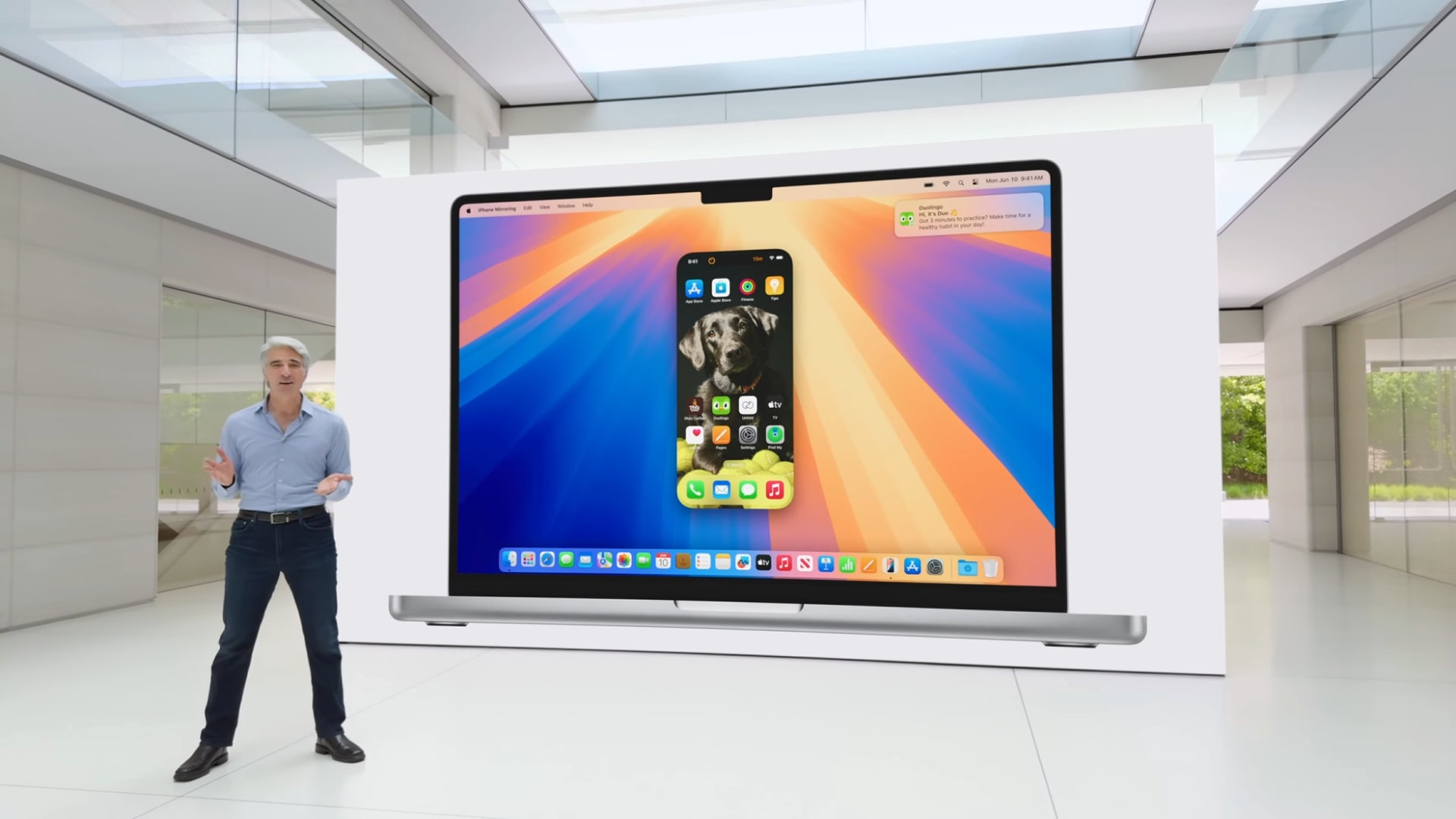When Apple announced macOS Sequoia at its Worldwide Developers Conference (WWDC) in June, the iPhone Mirroring feature quickly emerged as one of its most interesting new additions. This handy tool plonks a mockup of your iPhone onto your macOS desktop, letting you interact with your phone right on your Mac. Yet one of iPhone Mirroring’s best features has been totally absent, despite macOS Sequoia just launching – until now.
That’s because Apple has added the ability to drag and drop files between your Mac and your iPhone in the latest macOS Sequoia 15.1 and iOS 18.1 betas. That makes iPhone Mirroring far more capable and helps it live up to the potential it showed at WWDC.
Instead of having to rely on a cloud-hosting service like Google Drive or Dropbox, you can now move a file from your Mac onto your iPhone, or vice versa, saving you time and effort in the process. This feature also works when your iPhone is locked and charging, meaning it could be on the other side of the room and still enable you to move files between your devices.
In some ways, it’s also a superior alternative to using Apple’s AirDrop feature. While AirDrop opens the file that you share to your Apple device once it has transferred, iPhone Mirroring’s drag and drop functionality lets you move a file directly into a third-party app. Apple’s software chief Craig Federighi demonstrated this at WWDC by dropping a video file straight into a template in the Unfold app, showing the kind of things that are achievable with this new feature.

(Image credit: Apple)
To start using iPhone Mirroring’s drag and drop ability, you’ll need to download iOS 18.1 beta 5 on your iPhone and macOS Sequoia 15.1 beta 5 on your Mac, which can be done by creating a free Apple account on Apple’s website and then opting in to the relevant betas on your devices. Note that iPhone Mirroring is only available in the developer beta for now, but it should launch in the public beta soon.
Once you’ve downloaded the betas, open the iPhone Mirroring app from your Mac’s Dock and follow the on-screen instructions to set it up. Then you will be able to start shifting files between your devices with consummate ease. You can open an app like Photos in iPhone Mirroring on your Mac and drop a file there, or move something from your iPhone’s Files app onto your Mac’s desktop. There’s a lot of flexibility in how you use iPhone Mirroring.
It’s good to see this long-awaited feature arrive in macOS, but there are still plenty of other things that Apple announced at WWDC that have yet to make an appearance, notably many Apple Intelligence features and updates to Siri. While many of those aren’t expected to launch until next year, here’s hoping that – as with iPhone Mirroring – the wait is worth it.
Continue reading...
That’s because Apple has added the ability to drag and drop files between your Mac and your iPhone in the latest macOS Sequoia 15.1 and iOS 18.1 betas. That makes iPhone Mirroring far more capable and helps it live up to the potential it showed at WWDC.
Instead of having to rely on a cloud-hosting service like Google Drive or Dropbox, you can now move a file from your Mac onto your iPhone, or vice versa, saving you time and effort in the process. This feature also works when your iPhone is locked and charging, meaning it could be on the other side of the room and still enable you to move files between your devices.
In some ways, it’s also a superior alternative to using Apple’s AirDrop feature. While AirDrop opens the file that you share to your Apple device once it has transferred, iPhone Mirroring’s drag and drop functionality lets you move a file directly into a third-party app. Apple’s software chief Craig Federighi demonstrated this at WWDC by dropping a video file straight into a template in the Unfold app, showing the kind of things that are achievable with this new feature.

(Image credit: Apple)
To start using iPhone Mirroring’s drag and drop ability, you’ll need to download iOS 18.1 beta 5 on your iPhone and macOS Sequoia 15.1 beta 5 on your Mac, which can be done by creating a free Apple account on Apple’s website and then opting in to the relevant betas on your devices. Note that iPhone Mirroring is only available in the developer beta for now, but it should launch in the public beta soon.
Once you’ve downloaded the betas, open the iPhone Mirroring app from your Mac’s Dock and follow the on-screen instructions to set it up. Then you will be able to start shifting files between your devices with consummate ease. You can open an app like Photos in iPhone Mirroring on your Mac and drop a file there, or move something from your iPhone’s Files app onto your Mac’s desktop. There’s a lot of flexibility in how you use iPhone Mirroring.
It’s good to see this long-awaited feature arrive in macOS, but there are still plenty of other things that Apple announced at WWDC that have yet to make an appearance, notably many Apple Intelligence features and updates to Siri. While many of those aren’t expected to launch until next year, here’s hoping that – as with iPhone Mirroring – the wait is worth it.
You might also like
- iPhone Mirroring comes to Macs in macOS Sequoia public beta, but it's missing its best feature
- Apple just gave its brilliant iPhone Mirroring feature a handy upgrade in macOS Sequoia
- I love Apple’s iPhone mirroring feature so much I almost forgot Microsoft did it first – though Apple has definitely done it better
Continue reading...

